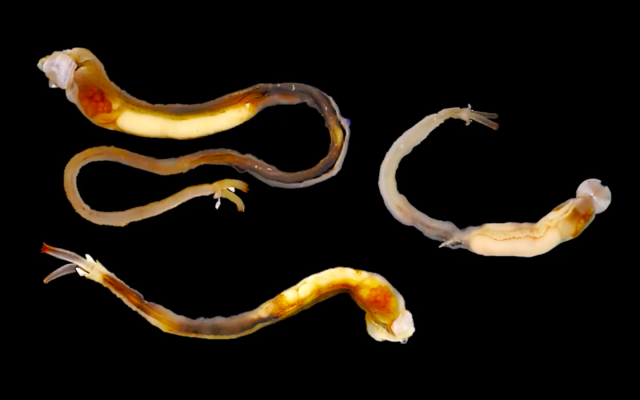Mysterious new tamilok shipworm discovered in Batangas
A shipworm previously unknown to science has just been discovered in Mabini, Batangas, potentially paving the way for new medicines and antibiotics.

Shipworms or tamilok are a common delicacy in Palawan and other coastal areas in the Philippines. The various kinds of tamilok may look like worms but are actually a type of clam with an elongated, worm-like body and a small, vestigial shell.
But little did the residents of Mabini, Batangas know that they’ve been eating a kind of tamilok so unique that an international team of scientists has classified it not just as a new species but an entirely new genus of its own—one which may pave the way for new medicines and antibiotics.
Scientists from the University of the Philippines’ Marine Science Institute (MSI) and Northeastern University in the United States discovered Tamilokus mabinia in early 2018, in shallow waters just off the coast of Mabini.
The researchers were part of the Philippine Mollusk Symbiont International Cooperative Biodiversity Group (PMS-ICBG), an international initiative to study shellfish and the bacteria that coexist with them.
The task of naming a new organism is always a coveted honor because it’s an opportunity to enshrine a bit of cultural history into the annals of science.
For Gisela Concepcion, MSI professor and associate program leader for the PMS-ICBG’s Philippine team, it was an easy decision: “Tamilok is a very Filipino name! And who better to name the species after than the ‘sublime paralytic,’ Apolinario Mabini, an intellectual Filipino?”
The PMS-ICBG researchers were only able to get nine T. mabinia specimens, but micro-computed tomography (Micro-CT) scans and DNA analysis were able to show that the creature was physically and genetically distinct from all known shipworms. Their work was published on February 7 in the open-access journal PeerJ.
Often referred to as “termites of the oceans,” the shipworms’ insatiable appetite for wood make them a nuisance to shipbuilders the world over.
They’ve been known to cause extensive damage to everything from docks to boats—sometimes, enough to change the course of history: in 1588, the shipworm-infested fleet of Spain’s King Philip II—the same monarch to whom the Philippines owes its name—lost a decisive battle against the naval forces of England’s Queen Elizabeth I. This defeat facilitated England’s eventual rise as a global superpower.
Filipinos, however, have long embraced the humble mollusk as a common food source.
While tamilok is often offered to tourists as an exotic dish, it’s really no big deal for the locals, some of whom even use it as a breastmilk supplement.
“Kinakain po nila yan minsan pangdagdag sa gatas ng ina,” said Melfeb Chicote, one of the researchers from MSI who helped collect the specimens off Mabini.
At first glance, they looked like any other tamilok. But they quickly caught the eye of Reuben Shipway, a post-doctoral researcher at Northwestern University’s Ocean Genome Legacy Center who’s been studying shipworms for almost a decade.
“This is probably a new species, immediately just from looking at the siphons,” he recalled in an interview with the New York Times. “They were pink and pinstriped.”
“There are so many exciting discoveries in the Philippines! The biodiversity is incredible,” Shipway told GMA News Online.
“We try to honor the Philippines as much as possible,” he said of the PMS-ICBG partnership.
“Dahil new species ito, likely new species din ang microbes sa biome nito,” Concepcion added.
She explained that a closer study of the creature’s gut bacteria and how it manages them could lead to the discovery of new antimicrobial compounds and antibiotics.
Both Concepcion and Shipway credit the speed and efficiency in identifying the new genus to the availability of scanning technology that better enabled them to closely study T. mabinia’s anatomy without dissecting it. “We were able to look at it internally in detail, in 3D,” Concepcion said.
Among the creature’s unique features are its large globular stomach and its particularly long “crystalline style”—a hard internal appendage that’s usually used to grind up food and to release digestive enzymes. “I’ve never seen anything like that before,” Shipway said, adding that T. mabinia seems highly specialized for eating wood, perhaps even more so than other shipworms.
Beyond the present study, little else is known about this new creature’s biology and life cycle: How does it feed and digest its food? What is its habitat range? Is it endangered?
One thing is clear, however: Tamilokus mabinia is palpable proof that the world is still full of unexplored and undiscovered mysteries—many of which are likely hidden in plain sight. — BAP, GMA News




